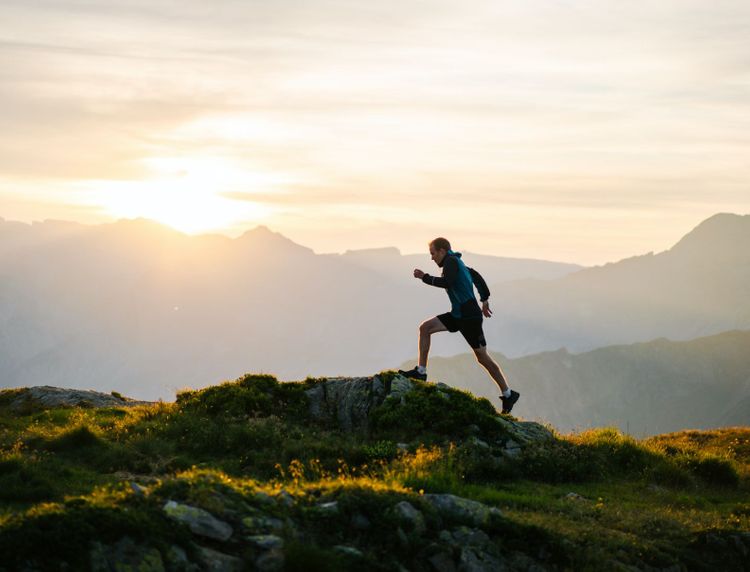Health Benefits of Shalabhasana (Locust Pose)
Yoga has benefitted millions across the globe. Shalabhasana yoga is among the many yoga poses that have been revered for their umpteen benefits. It helps to gain physical strength and flexibility, manage and reduce pain and still the mind. In this detailed guide, we shall focus on the Shalabhasana steps and benefits, their importance, contraindications and much more.
Share this article
List of Content
- What is Shalabhasana Yoga Pose
- Shalabhasana Benefits You Should Know
- How to Perform the Shalabhasana Procedure Step by Step
- What are the Different Shalabhasana Variations
- Shalabhasana Contraindications to Bear in Mind
- Conclusion
- Medical Insurance for Sustained Health
- FAQS
What is Shalabhasana Yoga Pose
Shalabhasana is a yoga pose in which the body resembles a locust in flight. It is a posture similar to a locust taking flight from the ground with grace and elegance. This pose instils a sense of grace and purpose, allowing them to elevate their minds.
Shala means locust or grasshopper and asana means pose. The Shalabhasana pose is among the thirty-two asanas taught at the Gheranda Samhita (yoga text/manual). It represents strength, balance and serenity and derives its name from the Sanskrit word Shala.
Shalabhasana yoga pose involves the backward bending of the spine. Therefore, it benefits the back, legs, pelvis, hips and arms.
Importance of Shalabhasana Yoga
The Shalabhasana yoga pose holds immense importance as it is a symbol of physical and mental harmony. While lifting the chest and legs off the ground, a person feels light and free. The pose reminds us to rise above hurdles and obstacles in yoga and in our lives too.
If we deeply ponder on the physical aspects of this pose, we find indications not just to overcome our physical limitations but also to rise above the mental challenges.
Shalabhasana Benefits You Should Know
Effective for Lower Back Pain
Shalabhasana involves lifting the lower body with the help of the belly, which leads to the tightening of lower back muscles. It is also known to provide stability to the spine by targeting it better than the forward bends. Thus, it strengthens the lower back, corrects back pain and tones the lower back muscles.
Helps in Premenstrual Syndrome
PMS, also known as premenstrual syndrome, is characterised by various physical, psychological, emotional, mental and genetic factors. Practising Shalabhasana helps to stimulate the hormones, relax the muscles, and strengthen the pelvic and abdominal muscles. Therefore, it can be effective in reducing the period-associated pains.
Improves Spine Flexibility
The backbend involved in Shalabhasana targets the entire spine. Lifting the chest and arching the back increase the spine's strength and mobility. Practising this pose also reduces spine stiffness and encourages healthy movement of the back and vertebral column.
Benefits the Kidney & Liver
The compression and stretching of the abdominal area positively impact the kidney and liver. When you practice Shalabhasana pose regularly, it improves the blood flow to the kidney and liver, enhancing their efficiency to filter the toxins.
Helps to Tone the Legs and Thighs
Shalabhasanan also works up the legs and thigh muscles as you lift them off the ground. The upward leg movement is supported by the leg muscles, making them stronger and toned.
Benefits the Shoulder and Neck
Shalabhasana involves stretching the shoulder and neck, which helps to strengthen them. If you want to tone your shoulders, then you must regularly practice Shalabhasana.
Beneficial for Stomach
During the Shalabhasana yoga pose, you lie down on your stomach, which puts pressure on the abdominal muscles. It helps to tone the stomach organs, including the spleen, liver, etc. Practising this pose also massages the abdominal organs, stimulates appetite, improves digestion and relieves gastric troubles.
Helps in Mental Focus
A lot of concentration and balance is involved in practising the Shalabhasana pose. Therefore, it can help to improve the mental focus.
How to Perform the Shalabhasana Procedure Step by Step
It is essential to know the right technique before performing the yoga pose to gain maximum Shalabhasana benefits. Here is a step-by-step guide to performing the Shalabhasana correctly.
One must begin by lying down flat on the stomach on a soft surface or yoga mat.
Place the arms along the body with palms facing downwards, forehead on the ground and legs extended straight.
Take deep breaths and relax your body while preparing for the pose.
Step 1
Inhale deeply while engaging the abdominal muscles. Lift your head, chest and legs simultaneously from the mat. Maintain the neck and spine alignment and look forward.
Step 2
Stretch your legs out as much as you can and lengthen the spine while exhaling.
Step 3
Maintain your arms straight. Keep them strong, pressing them into the mat. Relax the shoulders and keep them at a distance from the ears.
Step 4
Hold the pose for 20-30 seconds, and continue to breathe steadily.
Step 5
Release the pose by gently exhaling and bringing the head, chest and legs to the mat in a controlled manner.
What are the Different Shalabhasana Variations
The Shalabhasana yoga pose can be performed in different variations to make it more comfortable or more challenging, depending on your practice level. Below are a few Shalabhasana variations that you can follow.
The Airplane Locust Pose
Lie down on a yoga mat with your forehead on the mat, hands extended out in the front and your legs stretched behind.
Inhale and exhale once. With the next inhalation, lift the arms in the front and legs at the back as straight as possible. Keep the arms near the ears and feet together.
Keep squeezing the lower, middle and upper back. Keep the neck straight, gazing in the front.
Balance on the pelvis and hold the position for 20-30 seconds or as long as you can.
Exhale and release the position.
The Hand Clasped Locust
Begin by lying down on your stomach with your forehead on the mat, arms behind the back (raised) and fingers interlocked.
Keep the feet, knees and thighs together on the floor.
Inhale and exhale once.
On the next inhale, lift the legs, head, and chest as high as possible.
You must keep the hands clasped, arms and wrists straight, shoulders down and back. Extend the head slightly upwards and gaze straight.
Exhale and slowly release the head, hands, chest and legs.
Shalabhasana Contraindications to Bear in Mind
While Shalabhasana offers numerous benefits to the mind and body, one must be aware of the contraindications as the pose brings an impact on the lower back and other parts of the body.
If you have back pain or back problems, you must avoid practising this pose.
This pose may not be suitable for those who have major menstruation issues or a prolapsed uterus.
Individuals with blood pressure problems must avoid this pose as it can lead to suffocation.
Pregnant women must not perform this pose.
If you have severe sciatica, you must avoid this posture as it tightens the lower body from the hips to the feet.
If you have suffered a recent injury to the back, shoulders, or neck, then you must not perform this pose.
Those who suffer from heart conditions, hernia, glaucoma or hip arthritis should avoid this yoga asana.
Conclusion
Practising yoga is one of the most efficient and inexpensive ways to strengthen the body and calm the mind. You can experience Shalabhasana benefits in all the parts of the body, including the neck, shoulders, stomach, things, hips and feet. The locust pose can be practised in variations to suit your comfort level.
However, one must also bear in mind the contraindications or risks associated with this pose. If you are suffering from certain conditions, such as heart disease, high blood pressure, arthritis, etc., you must avoid this pose. To ensure safety, it is advisable to practise the pose under the guidance of an experienced trainer.
Medical Insurance for Sustained Health
Incorporating yoga as a part of your daily life is an excellent way to stay healthy and fit. However, medical emergencies can occur unannounced, leading to emotional and financial stress. Having family health insurance is one of the best ways to be prepared for medical uncertainties.
Tata AIG’s family health plans offer coverage up to ₹50 lakhs, which includes all your family members. You can avail of tax benefits, ambulance cover, AYUSH treatment, lifetime renewability, cashless facilities and much more with your health insurance plan.
Besides, our mediclaim policy plans offer COVID-19 coverage, cover for pre-existing diseases, and a High Claim Settlement Ratio for FY 2023-24.
FAQS
Does the Shalabhasana pose help the body's metabolism?
Yes, it improves metabolism by stimulating the abdominal organs. It also aids in digestion and energy absorption, leading to enhanced metabolism.
What are some of the mudras of Shalabhasana yoga pose?
Mudras are the hand gestures that you can include in the Shalabhasana pose. Some mudras for Shalabhasana are:
Moola mudra
Vajroli mudra
Bandha mudra
What is the age limit of family members in a health insurance plan?
Tata AIG family insurance is available for family members aged 91 days to 65 years old.
Share this article
Latest from our blogs

15 terms you must know before buying health insurance
We have listed all 15 terms a health insurance buyer should ...
Read More
How Much Health Insurance Do You Need?
While more and more people are getting insurance for things ...
Read More
4 simple steps to claim MediClaim in India
Check that all the documents contain required information li...
Read More